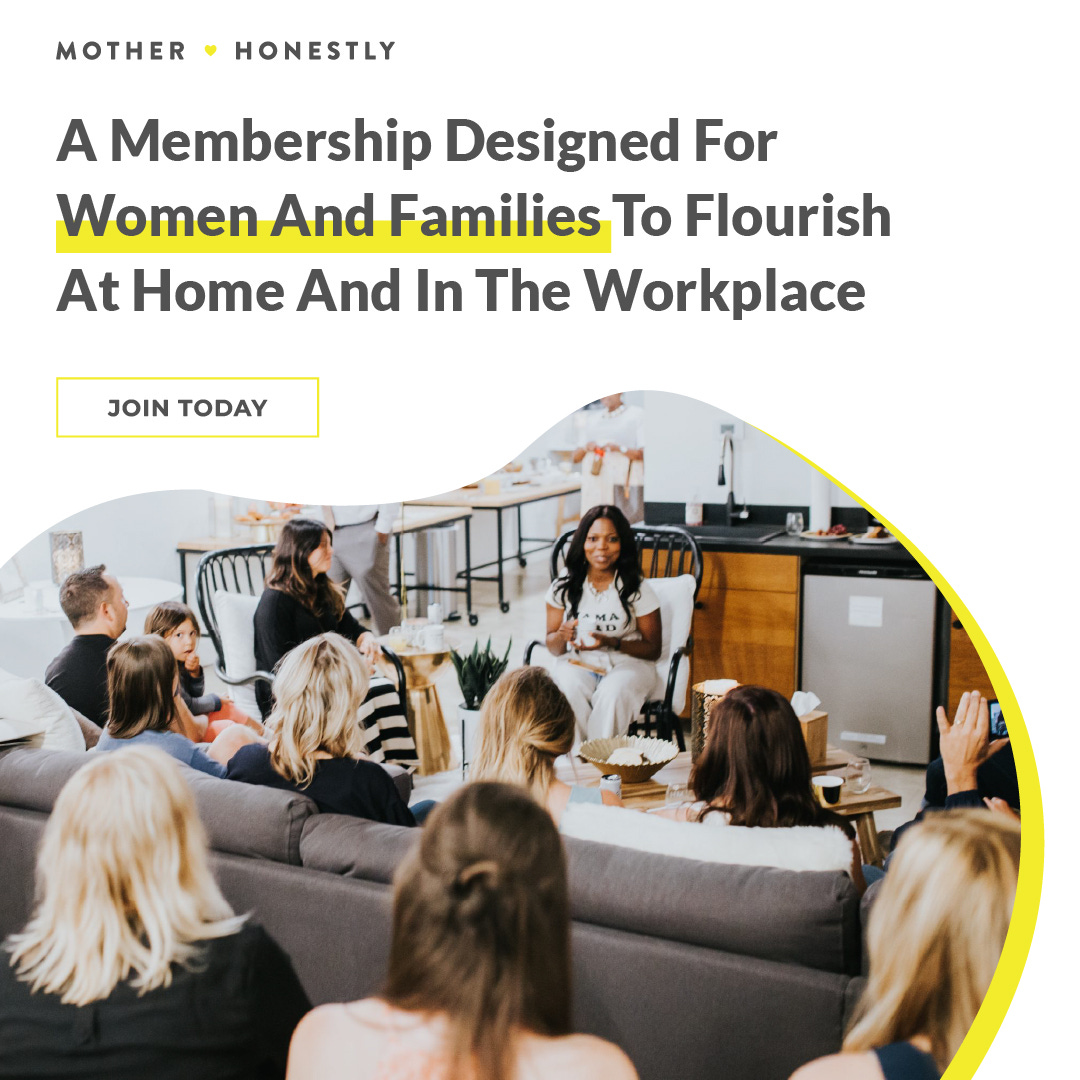The Overlooked Trait That’s Key to Getting Along With Your Coworkers
It can help you stay cool, calm and collected even during the most contentious conversations.
Welcome! Please join our community of 10,000+ moms as we discuss the future of motherhood and work, and how women and families can lead better lives at home and in the workplace. If you are new here:
Discussions with coworkers don’t have to be heated.
As employers scramble to entice more moms back into the workforce by expanding their paid leave policies and bolstering their wellness benefits, there’s one big factor I think they’re overlooking: We need to like the people we work with.
But it feels harder than ever. We live in a deeply polarized era. The pandemic exacerbated inequality. More of us are working remotely. These trends are pulling us apart, instead of together. That’s a problem for employers because studies show that good relationships—with our managers and our colleagues—are a big factor in employee retention.
Companies aren’t doing enough to facilitate a congenial environment. I’ve read (and written) stories lately about the rise of corporate empathy, and I’m glad more employers recognize the need for understanding managers. But we also need tools for those managers (and everyone else) so they can genuinely relate to their teammates. If company leaders want to celebrate Employee Appreciation Day tomorrow, they can start by forging a real connection with their workers.
That’s why I loved reading Bridge the Gap: Breakthrough Communication Tools to Transform Work Relationships from Challenging to Collaborative, a new book by Fortune 500 leadership coaches Jennifer Edwards and Katie McCleary.
They know a little something about bridging gaps. The two met at a women’s leadership circle and clicked right away. “It surprised us how much we got along, despite our differences,” Katie says. “She's a conservative. I'm a liberal. I'm about rock and rap. She's country. I'm a Buddhist. She's Christian. We are utterly different people, and the fact that we could communicate across a ton of different gaps was really important.”
So the two teamed up to write a book about how to use the psychology of human connection to drive meaningful communication and collaboration at work. I chatted with Katie to learn more about how curiosity is key to helping working moms do just that.
In the book, you talk a lot about the importance of curiosity. Why?
All the research and data shows that our perceptual curiosity plummets as we get older. We become disinterested in other people's perceptions except our own. The good news is that as we age, our empathy increases. So if we can keep our perceptual curiosity high—which means being present and open minded—we can go out and explore new ideas and hear new things. That exponentially increases our connections with others and our willingness to collaborate.
So how can we show curiosity at work?
Curiosity is more of an energy. It's not really about peppering someone with questions to get them to open up. Curiosity begins by checking any baggage that you have at the door, and asking, how am I showing up in my body in a clean way, so that I'm comfortable, calm and collected? People connect to that energy. They can tell when you're distracted, either by smartphone technology, your inner monologue, or your to-do list.
What’s your recommendation for beginning contentious conversations?
We have an opening phrase that we suggest using in almost all your conversations: “Tell me about…” It’s a great phrase because it really encourages people to talk about what's top of mind for them. When you can connect to what's top of mind to another person, and just be present with them in those first five to 10 minutes, you build connective, curious energy that can move a conversation to a more productive or collaborative place.
Katie McCleary is an entrepreneur and the founder of the nonprofit, 916 Ink.
How does remote work impact our connections with colleagues?
Remote work makes it a lot more challenging. It seems like we can have more intimate conversations on Zoom because I'm in your face, right? I see your face. You see my face. I'm in my home space. You're in your home space. You would think that that would make us more connected. The issue is our brain is so distracted in that up-close virtual video environment. I call it impression management. How am I impressing someone by showing up in a particular way? What does my background look like? How do I sound? What do my clothes look like? Did I take off an extra accessory? It’s all the rules that we put on ourselves, for what it means to belong and show up. We're telling people to show up as clean and curious. Show up undistracted. Slow down and be present.
So how do we do that in a remote environment?
We have to make a choice not to look at ourselves on the screen. If you can't turn your camera off, use the tools to minimize yourself and focus on the person talking. Turn off the bells and whistles—all the notifications coming in—that are completely distracting to the brain.
You also talk about how our stress hormone response makes it hard to handle anxiety and conflict in the workplace. Why is that?
In the book we talk about how you have a frenemy that's riding shotgun with you all the time. This friend is named Amy, short for the amygdala, and she can't tell the difference between perceived and real threats. When we walk into a conflict that we see as a perceived threat, our whole body floods with irritation. That flooding mechanism is Amy releasing cortisol into our prefrontal cortex, which is this giant, squishy part of our brain behind our forehead where communication, curiosity, collaboration and creativity happens. The minute you feel anxiety or dread, you're going to lose up to 26 hours of your prefrontal cortex capabilities. I don't know anybody who has 26 hours to lose, so we have to disrupt it right away. Literally the minute we feel that hit our body.
What’s the best way to disrupt that response?
Breathe. Five and a half seconds in your nostrils, five and a half seconds out of your mouth. If you do that five times—just a half a minute of breathing—when you feel that stress response hit your body, you can lessen the cortisol impact by nearly half. It allows you to access the moment and choose your response.
What are some other ways?
Pinch your thumb. If I’m really nervous about talking to someone, I pinch my thumb super tight. A lot of our former presidents have done that when speaking—made a fist with their thumb pressed tightly on top. I learned it by being in a beauty pageant! Another tip is to change your body temperature. If you’re heading into what you know will be a fraught interaction, go and wash your hands in hot or cold water. You can also loosen your jaw and do shoulder shrugs before you go into the conversation.
Why is this important for women, especially?
Women and working moms in particular are pulled like taffy into all these different roles. It's just really difficult to show up in conversations with people who might say or do something that really rubs us the wrong way. How do we not shut down? How do we not get hijacked or go to the bad place? Curiosity can be a form of protection. If you can follow the tools, then you can actually arrive at a place where conversations don’t have to feel awkward, because you're still being relational, but you're also following a tried and true path.
JOIN US
Join Blessing Adesiyan of Mother Honestly, Amy Nelson of The Riveter, Pooja Lakshmin of Gemma, Hitha Palepu of 5 Smart Reads, and Brigid Schulte of New America as we discuss the effects of the pandemic on women and families.
BECOME A MEMBER
Become a Mother Honestly member today to connect with other powerful moms and get access to 100+ hours of our keynotes and conversations, quarterly toolkits, digital summits, exclusive offers and more!
LOVE TO SEET IT
Maryland lawmakers commit to passing paid leave. Democratic lawmakers, who control the state’s Senate, have pledged to pass the Time to Care Act of 2022, which would give workers 12 weeks of paid family and medical leave.
HATE TO SEE IT
Black women have been left behind in America’s pandemic recovery. The unemployment rate for Black women (5.8%) has been significantly higher than that of Latinas, Asian women and white women, according to research from the National Women’s Law Center.
The cost of child care in the U.S. now amounts to 31% of the average income for women, also according to data from the National Women’s Law Center and reported by CBS.
#RELATABLE

This newsletter was written by Audrey Goodson Kingo, Editor in Chief at Mother Honestly. Please send feedback, ideas and suggestions (or just say hello!) to me at audrey@motherhonestly.com. And if you found this newsletter helpful, please share with a friend!






